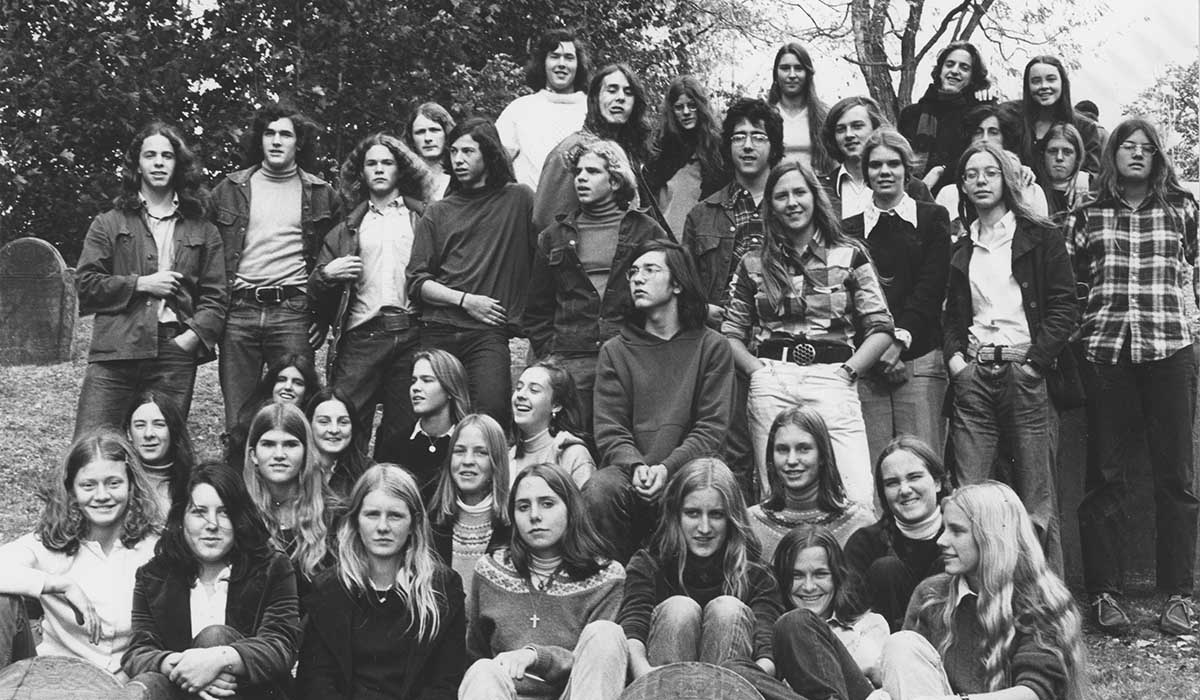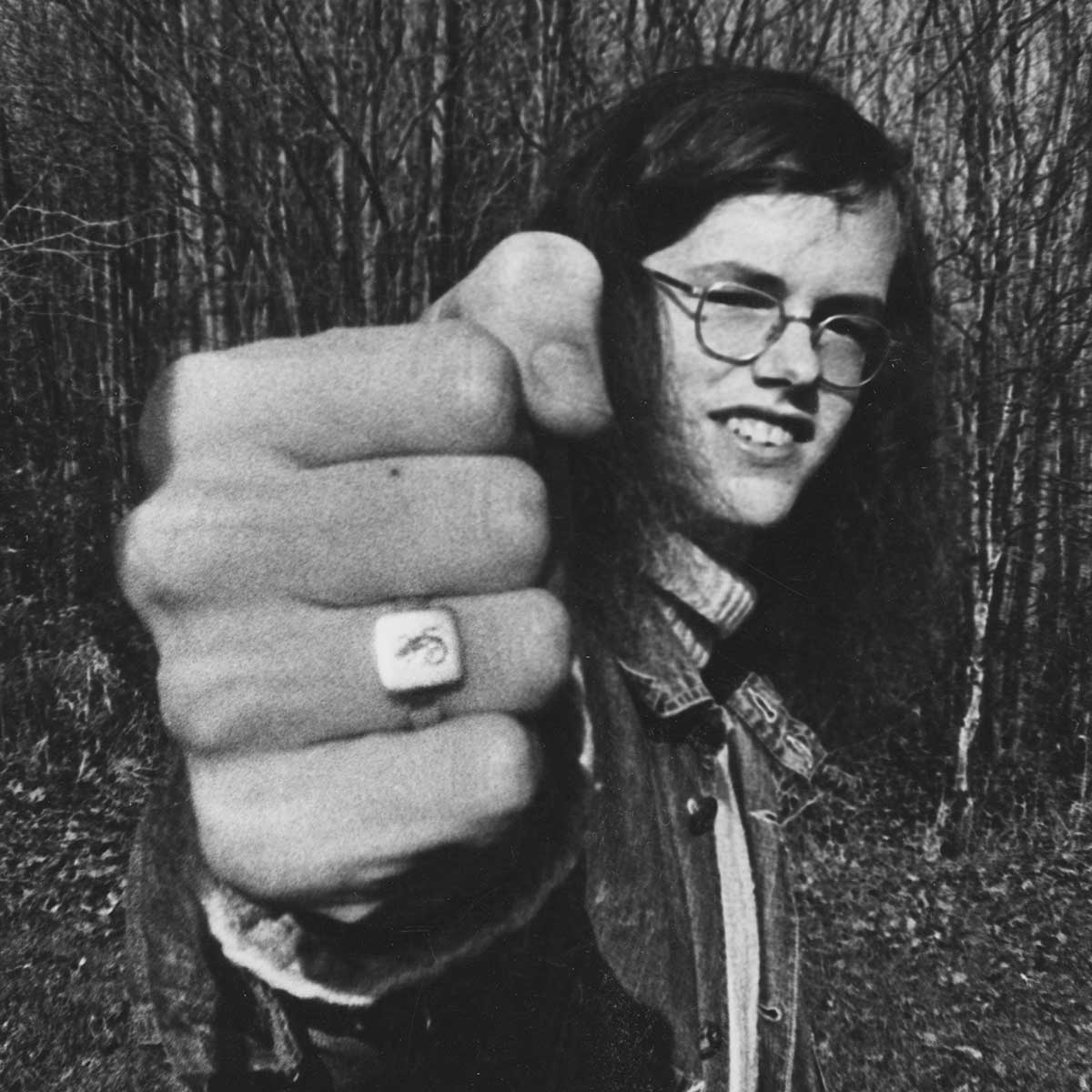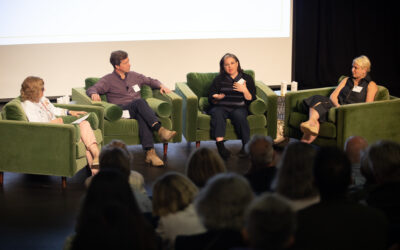As Concord Academy nears its 100th birthday, now proudly inclusive of all genders, the school also marks half a century as a coed institution

Members of the class of 1975, photographed in fall 1973.
On May 19, 1970, the Centipede reported on its front page, “Trustees Vote to Admit Boys.” One might expect such vital news to merit a banner headline across all four columns. In fact, the low-key, one-column story shared this prime real estate with three others. One covered a vespers talk by Rabbi Haskell Bernat on the escalation of the Vietnam War; another outlined student requests for eliminating boarding restrictions; and a third announced a presentation of student films. Together, these four pieces of reportage offer a revealing entrée into a pivotal decade remembered for its political turmoil, changing mores, student unrest—and a remarkable explosion of creative exuberance.
After debating the options for more than a year, the Concord Academy Board of Trustees made its bold decision to enroll boys, beginning in the fall of 1971. Though a handful of girls’ day schools would choose to go coed and a few boarding schools would do so much later, Concord stands out as the only girls’ boarding school to make such a risky decision at that time.
The absence of a blaring headline might be explained by the recent success of an exchange with St. Paul’s and the nascent coordination with Middlesex, which had begun to accustom girls to the presence of boys in their classrooms. It also appears that the girls, some of whom had been included in discussions leading up to the decision, were undaunted by the news because they felt unthreatened. Not only did they welcome the boys to their campus, they did so with kindness, humor, and the irrepressible spirit that had become their trademark. CA girls were willing to share their power, but they were not about to relinquish it. Despite the fears of some of the women who had graduated before them, Concord girls would continue to assert their intelligence, display their creative talents, sustain the school’s caring environment—and conjure lively ways to make mischief.
Excerpted from a forthcoming book commemorating CA’s Centennial by former faculty member and dean Lucille Stott.
In CA’s first year of coeducation,
out of
65
male-identified applicants,
37
were accepted to CA and
26
enrolled for the 1971–72 school year,
forming a little under
10%
of the student body;
10
were boarding students in Bradford House.

One junior, Thaddeus “Tad” Danforth ’73 from Groton, Mass., was accepted in 1971 as a day student and would be the first—and only—boy to graduate from CA in 1973, along with the 70 female graduates. He rented a white top hat and tails for the occasion.
“Most of us were a little quirky,” he recalls of the first boys. “Many of us came from schools where we were unhappy or didn’t fit in too well. At Concord, there was so much opportunity to do what you wanted to do. For me, that was media and photography. The school didn’t have a darkroom, so they let me build one. The big thing at CA was to think for yourself and learn how to learn. Those values have stayed with me all my life.”
— Centennial book excerpt


